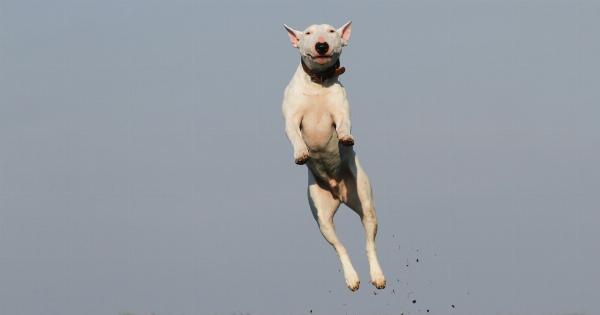Dogs are known for their peculiar behaviors, and one of the most curious ones is tail-chasing. While it may seem entertaining or cute at first, excessive tail-chasing can be a sign of underlying issues.
Understanding the psychology behind this behavior is crucial in addressing and resolving any potential problems affecting your beloved canine companion. In this article, we will explore seven possible causes of tail-chasing in dogs.
1. Natural Prey Reflex
One theory suggests that tail-chasing in dogs is a manifestation of their natural prey reflex. When dogs see their tails moving, it triggers an innate instinct to chase, just like they would if they were chasing a squirrel or a toy.
This behavior can be more prominent in certain breeds, especially those with a strong prey drive, such as terriers or hounds.
2. Boredom and Excess Energy
Dogs require mental and physical stimulation to stay happy and healthy. When dogs are bored or have pent-up energy, they may resort to tail-chasing as a way to entertain themselves.
If your dog lacks adequate mental and physical exercise, try incorporating more interactive playtime, walks, and puzzle toys into their daily routine.
3. Attention-Seeking Behavior
Some dogs may develop a habit of tail-chasing to gain attention from their owners.
If your furry friend realizes that every time they chase their tail, you stop what you’re doing and engage with them, they may repeat this behavior to receive attention. It is vital to provide your dog with attention and affection in a structured and consistent manner, rewarding them for desirable behaviors.
4. Anxiety and Stress
Just like humans, dogs can experience anxiety and stress. Tail-chasing can be a manifestation of these negative emotions. Dogs may chase their tails as a self-soothing mechanism or as a compulsive behavior caused by anxiety.
If you suspect that anxiety or stress may be the underlying cause, it is crucial to consult with a professional, such as a veterinarian or animal behaviorist, who can provide appropriate guidance and treatment.
5. Medical Issues
In some cases, tail-chasing can be a sign of an underlying medical condition. It is essential to rule out any physical ailments that could be causing discomfort or pain, leading your dog to chase their tail.
Conditions such as flea allergies, anal gland problems, or neurological disorders could be contributing to this behavior. A thorough examination by a veterinarian can help identify and address any potential medical issues.
6. Obsessive-Compulsive Disorder (OCD)
Just like humans, dogs can develop obsessive-compulsive disorder (OCD). Tail-chasing may be a compulsive behavior stemming from OCD, where dogs feel an irresistible urge to repeat specific actions.
OCD in dogs can be triggered by various factors, including genetics, anxiety, or a lack of proper stimulation. Seeking professional help is crucial in managing and treating OCD in dogs.
7. Habit Formation
Lastly, tail-chasing can simply become a habit. It may have started innocently, with your dog casually chasing their tail out of curiosity or playfulness.
However, repetitive engagement in this behavior can result in habit formation, making it challenging to break the cycle. Consistency, positive reinforcement, and redirection to alternative activities are key in breaking this habit.
Understanding the psychology behind tail-chasing in dogs is the first step in addressing and resolving this behavior.
It is essential to consider various factors such as natural instincts, boredom, attention-seeking, anxiety, medical issues, OCD, and habit formation. By identifying the root cause and providing appropriate intervention, you can help your furry friend lead a happier and healthier life.






























